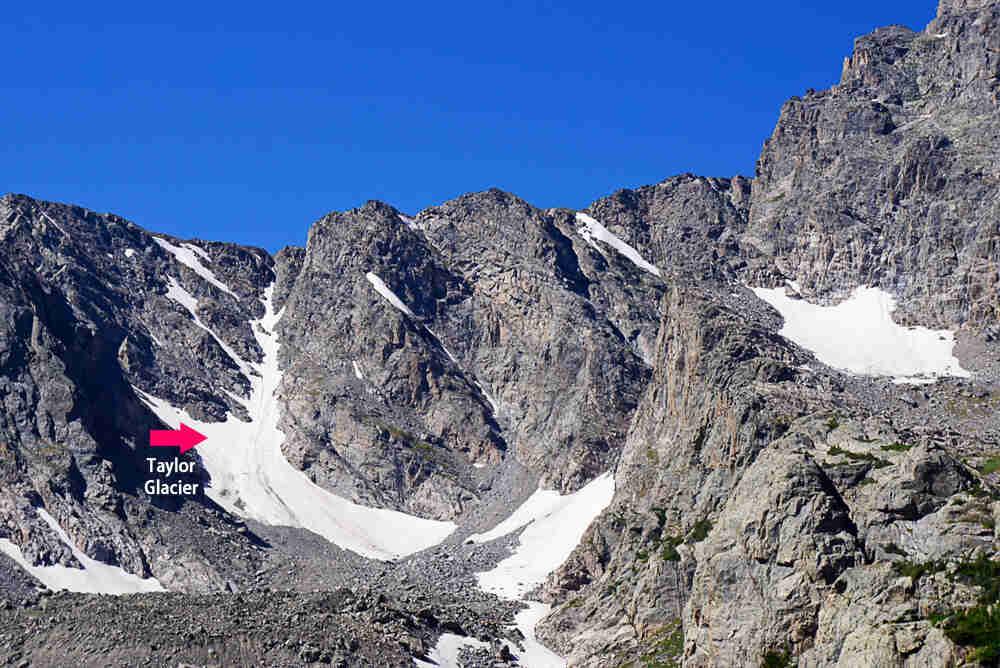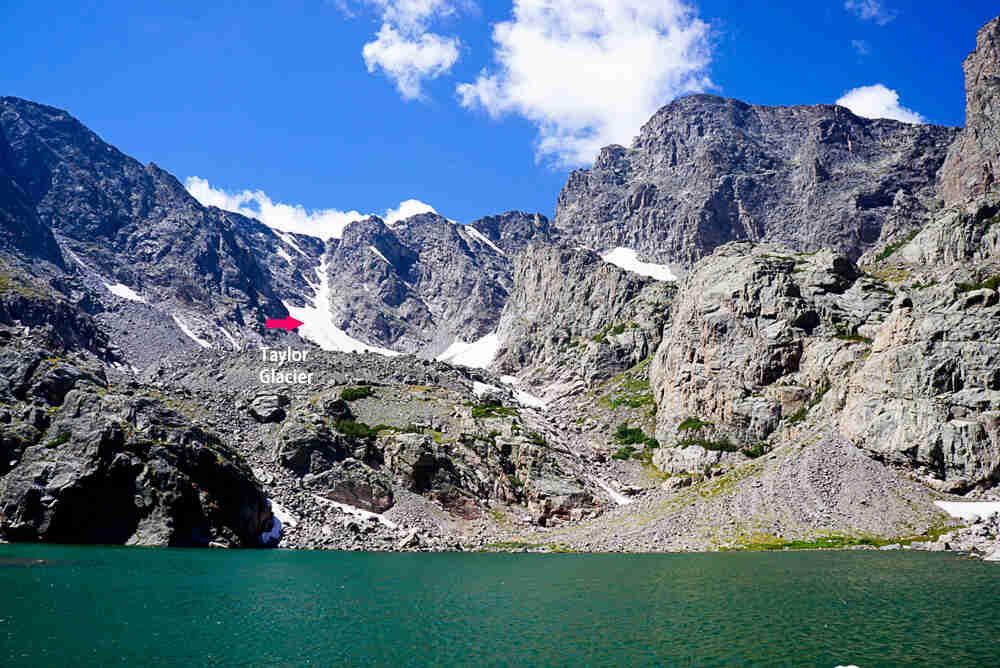Glaciers
Full Article
Snow in the high country sometimes accumulates faster than it melts, leading to the formation and continuation of glaciers. Colorado is home to seven glacial regions that reside mainly in central and northern Colorado. Each area sustains unique ecosystems and watersheds crucial to nature and humans alike. Throughout history, glaciers have shaped the Colorado landscape, carving out steep mountains and wide valleys. Native Americans had long depended on seasonal runoff, and it has fueled modern economies since the gold rush. Glacial runoff continues to provide for agriculture, recreation, and urban development. A stable future for Colorado relies heavily on the preservation of its glaciers.
History and Geography
Colorado’s glaciers began their formation 3 million years ago during the first ice age. The ice age brought with it four major deep freezes that allowed rapid glacial expansion. Over time, global climate changes created a series of glacial advances and recessions. As the glaciers fluctuated in size, they moved large bodies of debris and ice down into rivers and valleys. During episodes of global warming, western- and southern-facing glaciers often melted before the temperature fell below freezing. The last major glacial recession occurred 8,000 years ago and completed the creation of the seven glacial regions we have today.
The glacial regions in Colorado can be broken up into three geographic groupings: northern, central, and southern. The northern region includes the Park Range, Front Range, and Medicine Bow Mountains along the Colorado-Wyoming border.
Most of the glaciers in the Front Range are located in Rocky Mountain National Park and supply water to the Denver metropolitan area. The only glaciers still in existence in this region are cirque glaciers, named after their distinct wide, circular shape, which appear near ridge crests. Glacial recession is particularly concerning in this region due to their close proximity to major population centers. The last valley glaciers melted here 15,000 years ago.
Central Colorado is home to the Gore Range, Sawatch Range, and Tenmile Range. The Gore and Tenmile ranges run north to south, where glaciers carved steep valleys before becoming dormant. These valleys support local tourism such as Breckenridge Ski Resort. Tenmile is the only region dominated by rock glaciers, which do not expand once formed. To the west, the Sawatch Range is the largest and oldest glacial region in Colorado. Glacial deposits indicate glaciation perhaps as old as 130,000 years.
The southernmost glacial region is the San Miguel Mountains, which contain four small, unnamed glaciers. The largest glacier faces west, causing runoff to occur earlier than the others. Runoff supplies water to local cities like Durango.
Ecosystems and Watersheds
Glacial regions are often characterized as inhospitable high alpine areas. In reality, they are one of Colorado’s most biodiverse regions. At high elevations, three factors sustain a rich biodiversity. First, the fragmented topography of glaciers creates unique wind-protected areas with different exposures to sunlight. Second, the vegetation species are one-tenth the size of their relatives at lower elevations, allowing greater dispersion. Third, most glaciers face east, providing more sunlight. Although diverse, high alpine ecosystems are among the most climate-sensitive biomes.
At lower elevations, marshlands appear in valleys that host birds in thick wooded areas. Subalpine riparian ecosystems are bogs that have been dammed by glacial runoff and contain dense short willows and birch. These are the product of older glaciers, often in the Sawatch Range. Young glaciers host less vegetation and are steep, such as those found in the Tenmile region.
Glacial vegetation prevents erosion, sustaining reliable runoff patterns. The timing of runoff is crucial to watersheds throughout Colorado. Steep mountainsides in the Gore Range and Gore Canyon fuel the Colorado River’s peak seasons. Although dormant, Hague’s Peak supplies runoff from above the tree line into the Big Thompson River. These are a few examples of the many watersheds that rely on Colorado glaciers.
Glacial Recession
Mounting evidence suggests that Colorado’s glaciers are rapidly shrinking, which threatens the delicate ecosystems and watersheds that depend on them. Scientists are tracking this in a variety of ways. Visual clues provide the most obvious signs. For example, vegetation migrates upslope to colder temperatures, weakening crucial stabilizing root systems. Invasive plants choke out the smaller native plants, reducing biodiversity.
Changes in the depth and breadth of permafrost—ground that remains frozen year-round—in glacial regions also indicate rapid recession. Temperature measurements have shown that, in some places, permafrost has fallen out of sync with the normal seasonal climate, suggesting increased thawing. Permafrost provides the foundation for snow accumulation and water for plants. Melting permafrost loosens rock beds and can lead to landslides.
Nitrogen is a naturally occurring gas found in glacial deposits. But humans are now the leading producer of nitrogen, which becomes trapped in snow at higher elevations. Rising annual temperatures cause increased runoff, which carries the nitrogen into lakes and rivers. Researchers in the Rocky Mountains examined lakes surrounding glaciers and found high levels of nitrogen, which leads to acidification that can destroy surrounding ecosystems. These same lakes and streams can then contaminate aquifers that provide water for population centers.
Climate change alters the length, volume, and rate at which runoff occurs. In some cases, runoff seasons shorten, causing water shortages. Other areas experience rapid melting periods leading to erosion and flooding. Additionally, higher levels of runoff can wash out riverbanks and carry debris downstream, destroying habitats and tributaries to major rivers. Not only is this detrimental to various ecosystems, it also bottlenecks the water supply that sustains agriculture, economies, and urban sprawl.
The next twenty years will determine whether or not Colorado’s glaciers can survive the rising temperatures. A sustainable action plan is required to preserve our delicate glacial ecosystems, and because of the monumental importance of glaciers to all life in Colorado, all Coloradans are stakeholders in sustaining the affected watersheds. The stability of future generations of Colorado depends on the conservancy of its dwindling glacial regions.




